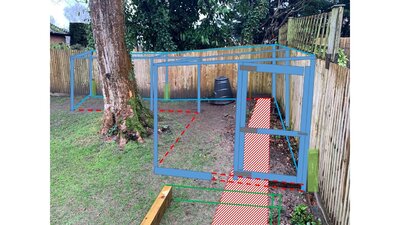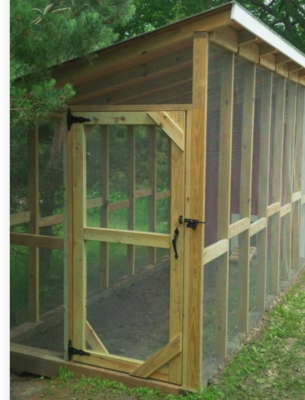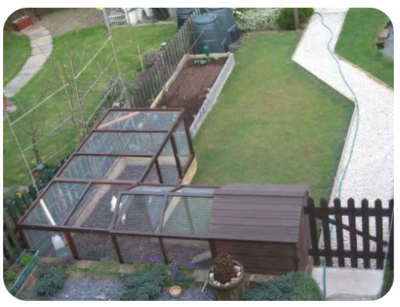Frattoneyes
In the Brooder
Hi all,
Hoping for some advice on building a new run before I get my first hens.
My requirement
Hoping for some advice on building a new run before I get my first hens.
My requirement
- To build a simple walk-in chicken run that will house Eglu Cube chicken coop and 3-4 hens (each with 2-3 sq meters space.
- To use the existing wooden garden fence on 2 sides. This is a redundant part of the garden so I want to utilise all this space.
- Height of run to be the same height as existing fence posts - plus an additional height for sloping roof. Keeping under 2.5 meters.
- DIY to keep costs down
- There are municipal electricity cables running underground in the area I've shaded in red. I do not want to dig in this area (other than a few CMs/inches for levelling)
- The tree is under Tree Preservation Order so must be avoided by law. Hence the L-shaped design proposal.
- The tree has roots which are near to the surface along the dotted red lines. This makes the ground uneven, impossible to dig down along the dotted lines.
- The entire area is uneven. The fence at the back is approx 1ft higher than the lawn at the front (nearest camera).
- The fence at the back isn't a perfect right angle
- The area has been cleared of bushes but the stumps remain. Digging or grinding these out would be impossible due to the proximity of underground electricity cables - will the hens mind the stumps in the run?
- My L-shaped requirement and the sloping nature of the ground means there aren't any off-the-shelf runs suitable.
- There are 3 concrete fence posts (shaded green in annotated picture) which could be used to support poles
- Would it be possible to use the existing fence posts as part of the frame structure? Or would I need to build all sides of the frame as new?
- How would I safely attach a frame to the existing fence posts? joist hangers?
- What should I use for the base of the coop to support the new vertical poles required to make the frame?
- How can I level the structure without using concrete or any permanent building (building anything too permanent is prohibited over the cables in case access to cables is required)
- My understanding is that contact with wood to ground is likely to result in the wood rotting (even if treated), therefore, how should I create the "foundations" of the frame to ensure longevity, strength and level whilst being unable to dig due to roots and cables?









